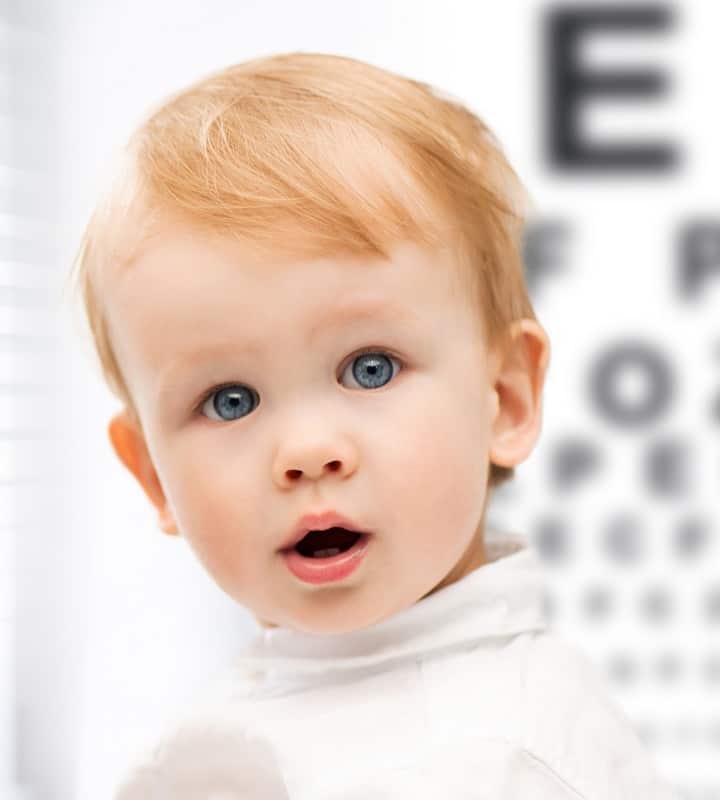EYE EXAMS
Eye disorders can strike people of all ages, even young children. Unfortunately, kids may not have the capacity to communicate that they are experiencing a health or vision problem. If you or a pediatrician suspect that something may be wrong with your child’s eyes, you may be referred to be a pediatric ophthalmologist for examination.

At Children’s Eye Care of Northern Colorado, board-certified ophthalmologist Carolyn Graeber can conduct a series of tests to determine what — if any — problems are afflicting your child’s eyes. Having devoted her career to treating young patients, she is highly skilled at building trust with and gaining cooperation from children who may be hesitant to participate in these essential tests.

What You Can Expect During Your Child’s Comprehensive Examination
Our team offers a series of eye tests, which are adjusted to accommodate kids of different ages and abilities (babies, preverbal children and children who can read). The appointment usually lasts between 90 minutes and two hours, which includes some downtime during dilation. Pupil dilation is a process that temporarily enlarges the pupil of the eye and is how Dr. Graeber can see all parts of the eye, including the retina and optic nerve. This step is essential for determining if a child has an eye problem that requires treatment.
Tests can measure a variety of factors, such as:
- Field of vision
- Depth perception/eye cooperation
- How the pupil responds to light
- Movement and alignment of the eye muscles
- Intraocular pressure
Many of these tests are conducted on each eye separately, to ensure that a stronger eye does not overcompensate for a weaker eye, while others look at how the eyes function and cooperate together.
Disorders That Dr. Graeber Looks For
Before any treatment can begin, Dr. Graeber conducts a thorough series of tests to arrive at an accurate diagnosis that can be used to formulate a plan of action.
Strabismus
Strabismus, or “crossed eyes,” is a disorder where the eyes do not align correctly. Dr. Graeber can test the function and movement of the eyes to make a diagnosis. Depending on the findings, treatment options may include glasses, patching, convergence exercises, Botox and/or surgery.
Amblyopia
Amblyopia, better known as lazy eye, is a condition where vision is significantly blurrier in one eye than the other. The longer this condition goes undiagnosed, the more the brain starts to rely on the stronger eye, which weakens the lazy eye further. Tests can determine the strength of each eye, with patching, glasses and eye drops all being potential solutions.
Nasolacrimal duct obstruction
A tear duct obstruction can prevent tears from draining properly. Consequently, this can cause the eye to become inflamed and emit a yellowy mucus discharge that crusts on the eyelid. Tests allow Dr. Graeber to determine if a blockage or infection is present so that she can recommend a treatment plan.
Ptosis
Children with ptosis have a droopy eyelid, which can diminish the field of vision and can cause poor visual development or vision loss in that eye. With tests, Dr. Graeber can determine if this is something that the child was born with or if it is the result of a new underlying problem. She can also determine if the droopiness is affecting vision. A droopy eyelid often requires additional testing to determine the source, treatment to prevent vision loss and sometimes surgery to correct.
Pediatric Cataracts
Although cataracts are generally associated with old age, they can occur in patients of any age, with some infants being born with cataracts. If tests determine that congenital cataracts cloud the vision significantly, cataract surgery may be warranted.
Schedule an Examination
Dr. Graeber is pleased to offer the latest technology and tests available to best evaluate the condition of your child’s eyes. To make an appointment with an experienced ophthalmologist who has a genuine interest for the young patients in her care, please call Children’s Eye Care of Northern Colorado at 970-214-8175.

